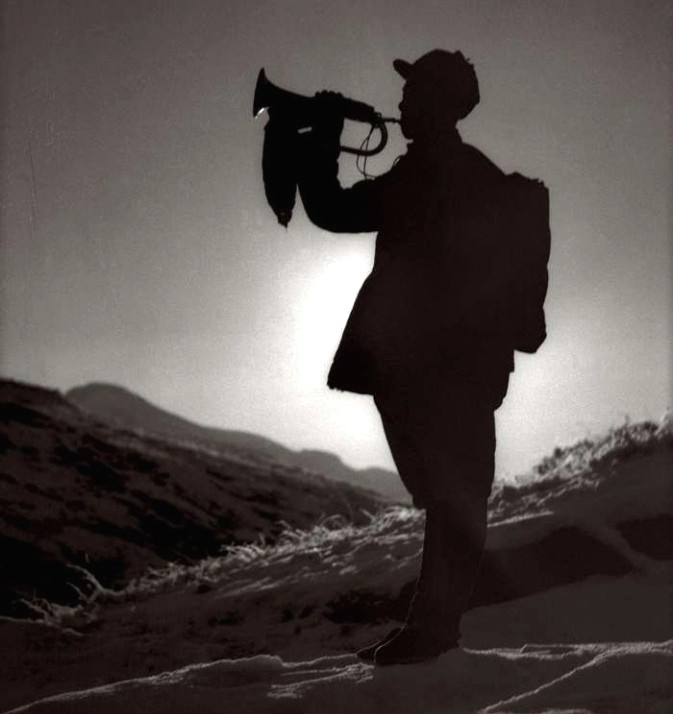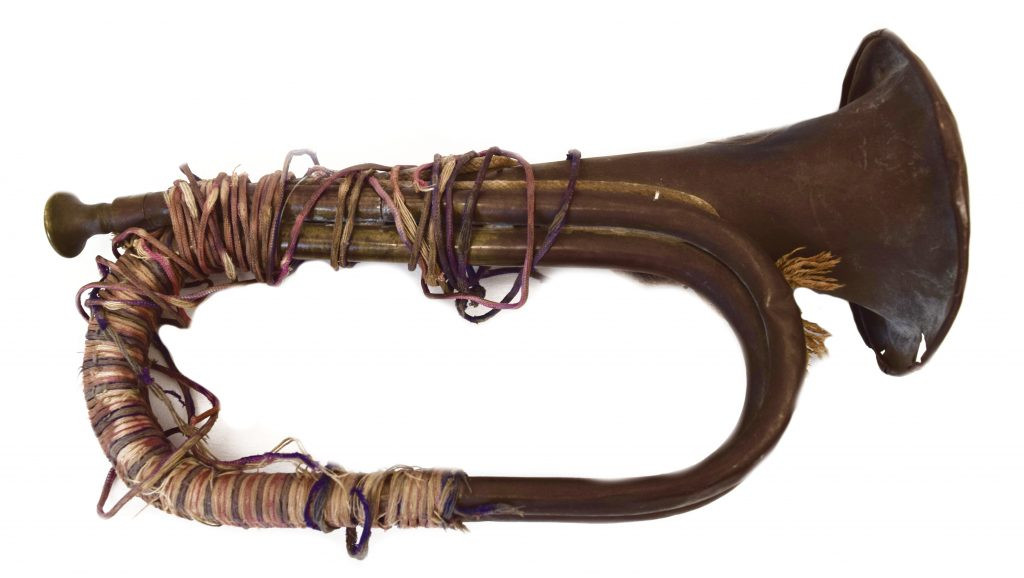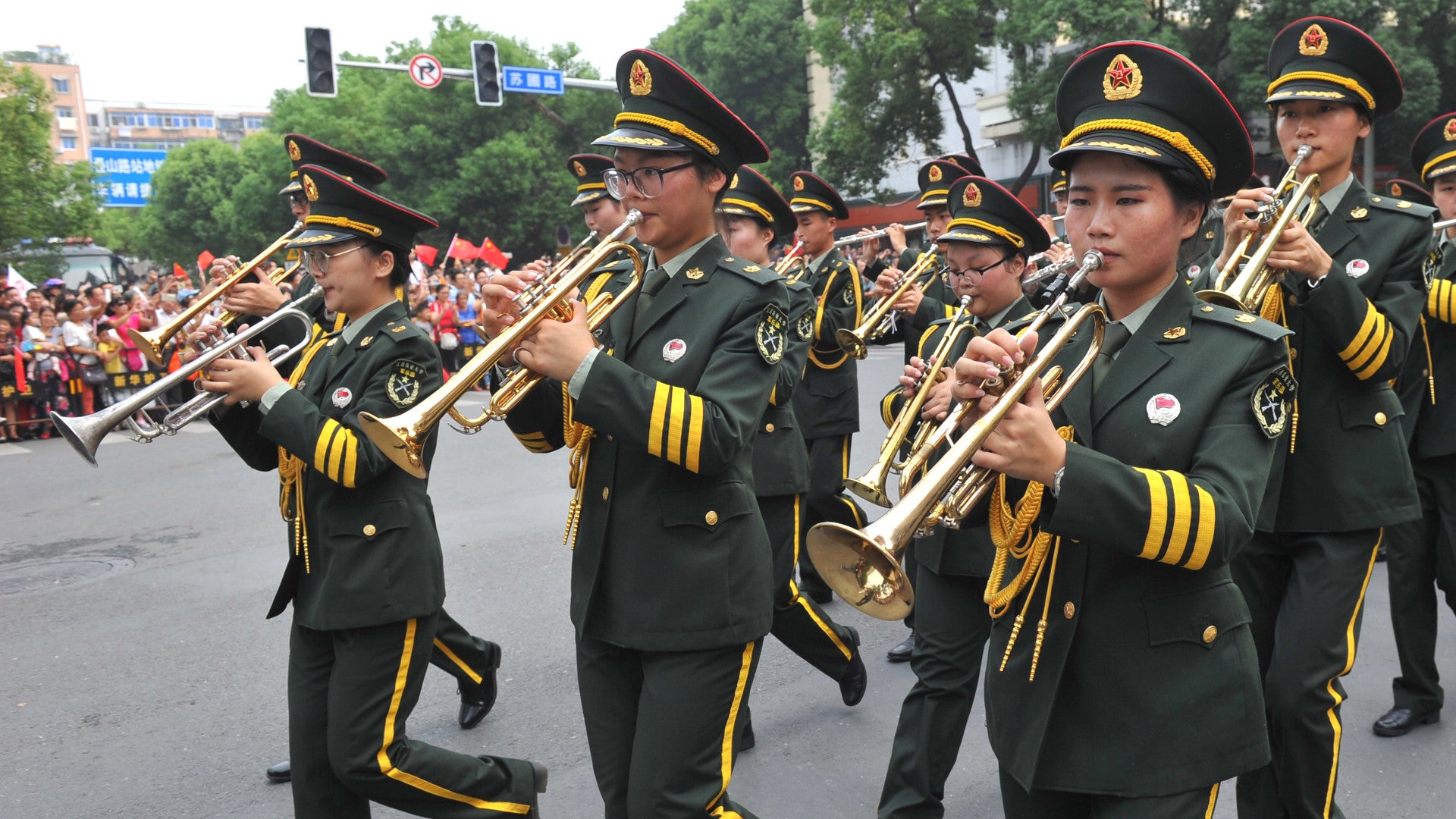China has released a new defense policy white paper, the first since 2015, which lambasts the United States, in particular, as the principal threat to global stability. Not surprisingly, it casts itself as a stable alternative, despite its very visible actions to the contrary in recent years, and calls for continued modernization and expansion of the People’s Liberation Army and its ability to meet various foreign and domestic security challenges. The document specifically notes a number of materiel developments that the Chinese clearly see as important reflections of these already growing capabilities, including the J-20 stealth fighter, the DF-26 intermediate-range ballistic missile, and the Type 052D destroyer. But there’s one that’s a bit more curious, the return of bugles as a battlefield communication tool.
The Chinese government’s latest policy document says that the People’s Liberation Army (PLA) has “restored and improved the traditional mechanism of using bugles to communicate and command.” However, it does not provide any specifics on how widespread the practice is at present or across which of the PLA’s services. It’s main branches, at present, at the PLA Army (PLAA), PLA Navy (PLAN), PLA Air Force (PLAAF), and PLA Rocket Force (PLARF), the last of which is responsible for the country’s ballistic missile units. In 2015, China also activated the People’s Liberation Army Strategic Support Force (PLASSF), primarily to handle space and cyberwarfare operations. Last year, the Chinese also announced plans to create the PLA Joint Logistic Support Force (PLAJLSF) to create a central command for major logistics activities, as well as construction tasks, including oil pipeline work.
Bugles as an instrument of military communication date back at least to the 18th Century, but they were also the evolution of millennia of militaries using musical instruments and other auditory signals to direct forces on the battlefield. Bugles and similar instruments have typically been associated with ground and naval forces.
The Chinese white paper did not say whether or not PLA forces would be using actual bugles or some other instrument. Elements of the PLA had already continued to use bugles operationally into the 1980s, well after they had become a more ceremonial, non-combat tool in most other militaries around the world. Other traditional battlefield signalling tools, such as whistles and signal flags, also remain in Chinese military use.
The first reports that China was looking to reboot the PLA’s bugle capabilities emerged in 2018. The new system significantly reduces the total number of bugle calls from 109 to just 21. The new calls will include a number to routine activities, such as reveille in the morning and taps at night, along with ceremonial purposes. However, the PLA has made clear that there will also be calls in a third category for actually signaling actions on the battlefield.

“The purpose of restoring and improving the bugle calls system of the Chinese People’s Liberation Army (PLA) is to further strengthen the troops’ consciousness in listening to orders, inherit the good traditions of the army, and boost the soldiers’ morale,” one 2018 article on China Military, an official PLA outlet, explained. “The bugle calls system was established in the early age of the Chinese People’s Liberation Army and played an important role in guaranteeing the victory of the war.”

It remains to be seen how serious the PLA actually is about the bugles. It is certainly true that, unlike modern radios and satellite communications systems, the instruments can’t get jammed or spoofed or intercepted or hacked via electronic means. At the same time, bugle calls have an extremely limited range by any standard and can only convey broad messages – attack, retreat, and so forth – to those in earshot.
The immense amount of noise on a modern battlefield full of automatic gunfire, unarmored and armored vehicles, helicopters, combat jets, and more, could easily drown out their signals, too. The U.S. Marine Corps is notably looking to issue a significant number of regular combat troops with sound suppressors for their rifles in part to help make it easier for small units to communicate verbally during periods of intense action.
The video below includes various U.S. Army bugle calls as generic examples of the use of the instrument for communicating day-to-day announcements and combat commands.

Of course, if your electronic communications are unavailable for some reason, bugles do represent a no-frills backup option that can at least communicate to some degree. With multiple buglers spread between units, they could relay calls across a larger area with relative rapidity and at a volume above how loud a person might be able to yell without quickly going hoarse.
Auditory signals would work in the dark or in situations where friendly forces may be hidden away behind physical cover, smoke, or other obscurants, and unable to otherwise see hand signals or flags. However, using bugles in these situations would expose the position of any concealed unit, too.
In the end, it may turn out to be that the PLA’s restoration of bugle calls for combat purposes is itself somewhat symbolic and could find itself confined to training exercises, demonstrations for senior officials and foreign dignitaries, and reenactments to mark major historical anniversaries. There have been also been similar developments in Russia, including the recent creation of a ceremonial Russian Army unit equipped with World War II-era T-35/85 tanks. Russian President Vladimir Putin has made appeals to nationalism a key part of his governing style.
“The National Revolutionary Army that participated in the Nanchang Uprising on August 1, 1927, already had buglers and a bugler detachment,” according to another China Military article, underscoring the PLA’s deep and existential connection to the bugle. “In November 1931, the Music Scores of Military Bugle Calls of the Chinese Workers’ and Peasants’ Red Army was formulated and issued, and the Chinese military had its own bugle calls scores and regulations for the first time.”
The symbolism of the bugle certainly appeals to a reinvigorated sense of nationalism that President Xi Jinping has steadily promoted since first taking up his post in 2013, too. After China intervened in the Korean War, “military bugle calls were widely used by the Chinese People’s Volunteer Army, playing an important role in creating psychological shock on the so-called ‘United Nations Army’ and dwarfing their morale,” China Military declared in a 2018 piece dripping with patriotic fervor.

The aggressive shift in Chinese policy, away from even outward calls for regional and global cooperation with potential opponents such as the United States to more outright competition, is otherwise visible throughout the 2019 defense white paper. Calling out the U.S. government is hardly surprising given the current state of U.S.-China relations, which are at a recent low. The two countries in the midst of a major trade war and they have also seen escalating tensions over Taiwan and the South China Sea, among a host of other issues.
“The U.S. has adjusted its national security and defense strategies, and adopted unilateral policies,” the Chinese defense policy white paper says. “It has provoked and intensified competition among major countries, significantly increased its defense expenditure, pushed for additional capacity in nuclear, outer space, cyber and missile defense, and undermined global strategic stability.”
With all that in mind, the document’s general themes also align with increasingly assertive PLA activity, especially in the South China Sea. China is also pushing ahead with efforts to expand its ability to project power further from its borders in pursuit of becoming a true global power.
“Guided by Xi Jinping’s thinking on strengthening the military, China’s national defense in the new era will stride forward along its own path to build a stronger military and endeavor to achieve the great goal of developing world-class forces in an all-round way,” the white paper declares in its closing statements. “China’s armed forces have the determination, confidence and capability to prevail over all threats and challenges. They stand ready to provide strong strategic support for the realization of the Chinese Dream of national rejuvenation, and to make new and greater contributions to the building of a community with a shared future for mankind.”
At least for the immediate future, beyond China’s various ongoing high-technology weapons developments, which range from stealth aircraft to railguns to hypersonic missiles, and more, this pursuit of “national rejuvenation” will also include training troops on how to issue and respond to bugle calls on the battlefield.
Contact the author: joe@thedrive.com
